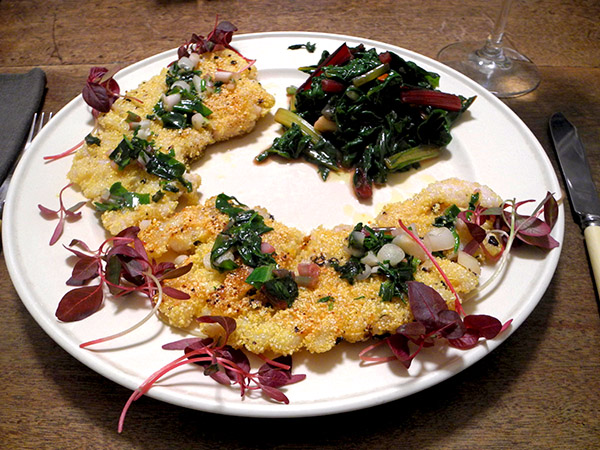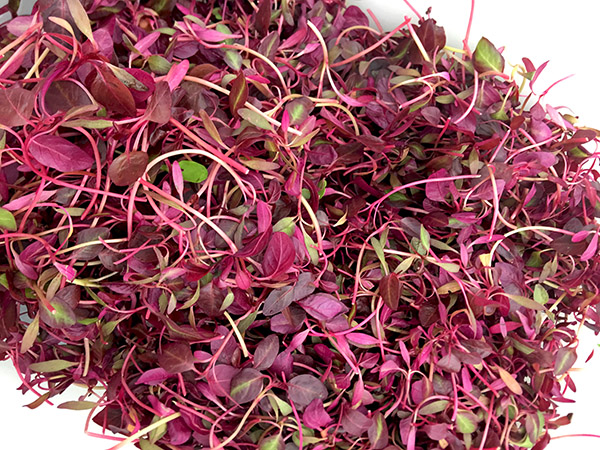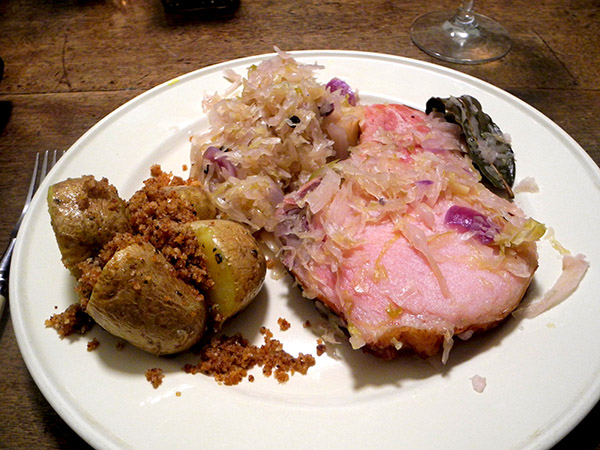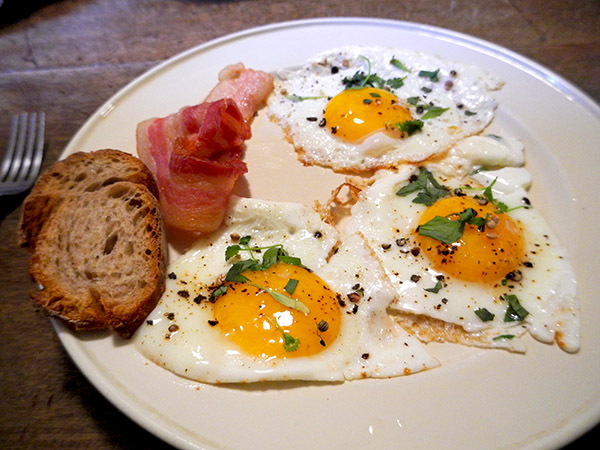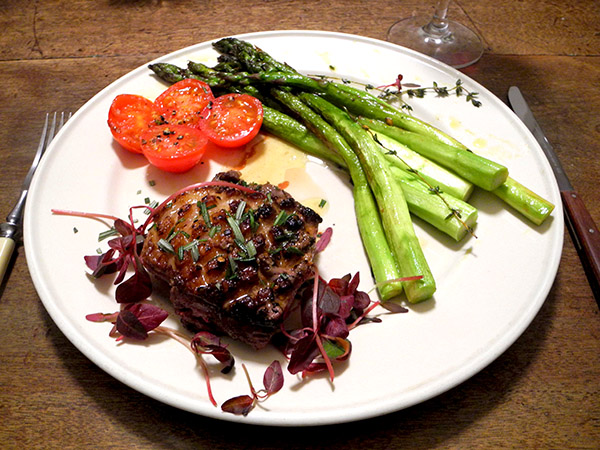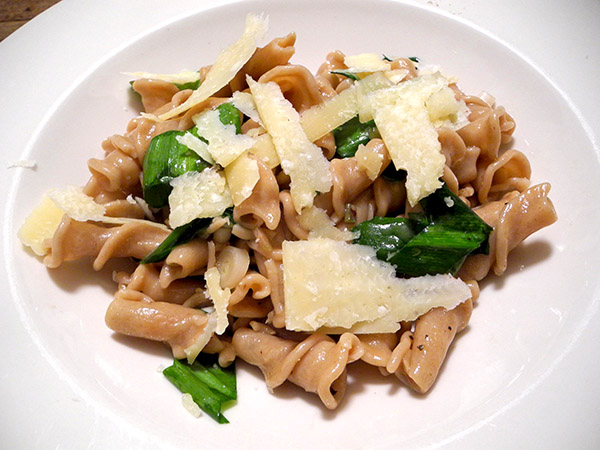
It was almost a night off, since, although there were 2 courses, this meal was very easy to throw together.
- most of the bulb sections, including stems, of a bunch of ramps from Berried Treasures, heated with a little olive oil inside a heavy, high-sided, tin-lined copper pan with a bit of crushed dried dark habanada pepper and about the same amount of a crushed dried Sicilian pepperoncino from Buon Italia until the alliums had softened and begun to give pff an aroma, mixed with half a pound of Sfoglini rye blend ‘trumpets which had been cooked seriously al dente, the roughly chopped ramp leaves now added and everything (including some of the reserved pasta water) tossed and stirred over a low-to-moderate flame for a couple of minutes to blend the flavors and the ingredients, served with shaved Parmigiano-Reggiano Vache Rosse from Eataly
There was a antipasto, served immediately before the trumpets.
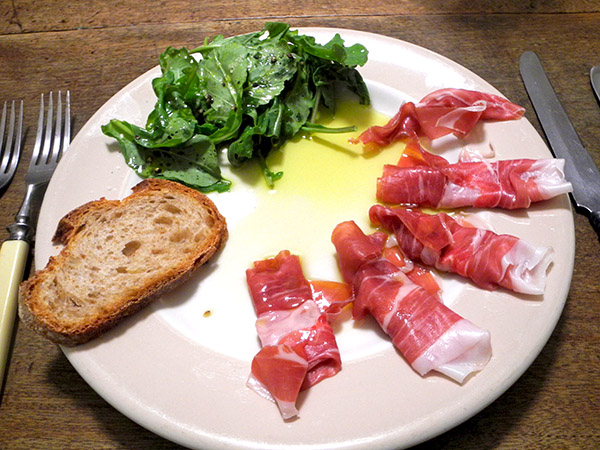
-
three ounces of an incredibly delicious salumi, La Quercia Ridgetop Prosciutto, from Whole Foods, drizzled with a very small amount of Alce Nero DOP ‘Terra di Bari Bitonto from Eataly
- baby arugula from Lani’s Farm, also drizzled with the oil
- slices of Bien Cuit rye and sunflower bread from Foragers Market
- the wine throughout was a lovely Italian (Marche) white, Cantina Sant’Isidoro – Pié di Colle 2015, from Chelsea Wine Vault
- the music was Bruckner’s 1888-1889 Symphony No. 3 (‘Wagner Symphony’), Andris Nelsons conducting the Gewandhausorchester Leipzig
